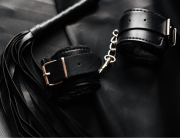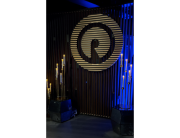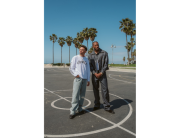As the NFT craze had a significant boom on the market around 2020, more artists are approaching the industry in order to expand their profit possibilities and improve in a new industry. And they have nothing to lose, considering that the most expensive NFT collection was sold for $69.3 million (or 38525 ETH). The artwork is called “Everydays: The First 5000 Days”, and it showcases little moments from the artist’s daily life since its emergence on social media, where a community formed.
Of course, artists need to have a new vision about their art and approach when transforming their creations into NFTs. First, they must have a basic understanding of what these technologies are based on, the profitability of the ETH price since all NFTs are built on Ethereum and their availability to adapt to new trends.
But in places like Detroit, where modernism and technology blend perfectly, it’s not that difficult for artists to be on top of the competition.
Lurk and Destroy by Jason Abraham Smith
Starting strong with an NFT collection of vibrant colors and brave designs, Lurk and Destroy is the most promising and successful artwork from Jason Abraham Smith, who comes from Detroit. The muralist, painter and muralist became famous for its otherworldly imagination that transforms into vibrant designs.
His best work is Lurk and Destroy, which includes three collections of a specific number of NFTs. Maximum Lurkage has about ten eyeball-inspired NFTs, Strange Islands consists of 14 assets, and Fresh Ink is a hand-drawn collection with unique digital artwork. The creator has previously collaborated with companies such as Ford Motor Company and celebrities like Blondie and Lorde. You can find his collections on OpenSea.
Everywhere and Nowhere by Gerald Collins
Gerald Collins started to make waves on the NFT market in 2021 when his “Everywhere and Nowhere” collection was released on Rarible. The NFTs approached complex concepts of time and space through unique forms, putting to image nature’s influence on humanity. Most digital artwork looks like an infinite abyss, which enhances the creator’s message.
Some NFTs also feature sounds, for which Gerald Collins collaborated with Kareem Ali. At the time of its appearance, the collection had a set price for each NFT of one ETH since it was limited. Upon the purchase, customers would also receive hand-signed certificates by the artist to show authenticity, even though it’s commonly known that each NFT is unique and their ownership can easily be proved.
NIGHT CREEPS by Jack Tuber
Jack Tuber may be one of the most impressive NFT artists because he is nine. With the help of his father, who manages his accounts and allows his artworks to get famous on the internet, Jack is a sensation in Detroit when it comes to its creepy NFT collections. For instance, the Night
Creeps collection is a mix of Jack’s art and his father’s.
But Jack has a few other NFTs listed, such as the Three of Unity and Squiblets, with Ladiez of the Universe being the most special on OpenSea. Besides Ethereum, Jack’s childish but profound artwork is also available with MATIC. The creator also chose to donate a part of his earnings to St Jude.
OP3N MINDS by NE$$Y
Of course, not all NFT creators must establish their market presence through images and digital paintings. That’s why NE$$Y, a singer from Detroit, explores the path to NFTs by offering his artistic view through these assets. Thus, he founded OP3N MINDS, his NFT sound collection consisting of ten original songs and 1110 music NFT collections featuring other artists’ works.
For instance, NE$$Y worked with Dino Belli, an NFT artist and creator based in Colorado. Besides the actual content, the collection offers buyers a free plushie for every minted NFT and holds utilities for the assets.
Princess Butterflies by Empress Robinson
We’ve got another child genius in the world of NFTs. At only four years old, Empress Robinson creates watercolor and acrylic paintings of mostly butterflies but also other natural components. She has already reached her sixth collection this year, Empress’ Dragons, which features colorful and vibrant abstract dragons.
Besides NFT collections, Empress also offers platforms for her creations through which donations are used to help charities and environmental NGOs. On Empowering Child Artists and Girl Empowerment, the girl builds her empire at such a young age, and we’re excited to see what she’ll become in a few years on the NFT market.
Why people should support local artists more
Although NFTs are still seen with skepticism by many users, they’re a new form for artists to express their creativity and also create a side income. Local artists need more support than others, which is why there are a few more ways to help them increase their fame besides buying their art. Of course, you can donate real money occasionally to help them get their necessary tools and gain more access to platforms.
Considering that you might not be interested in cryptocurrency and therefore cannot afford one of their artworks, you can attend in-person events where they present their art. If not, even online support is a big deal, especially on social media. Sharing your local artists’ creations on your platforms helps them gain exposure and establish their brand. If we remember the case of the most expensive NFT, we can see how the community had a massive input in the creator’s fame, even though it was built in more than ten years, when there wasn’t such a big deal with NFTs and crypto. Therefore, if you want your local artists to be successful, you can support them online.
Wrapping up
The NFT industry is slowly reaching a point where some artists are becoming the staple of this sector, so it’s starting to settle, with people getting used to this art form. Although worldwide artists are great, we can’t help but recognize the talent in Detroit, with people whose art is the most vibrant and dynamic to child prodigies who start offering their NFT collections with a cause at the age of four.







Add Comment